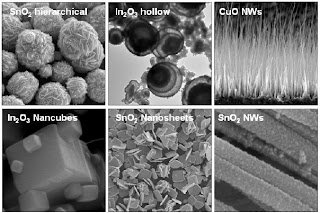Most of the electronic equipments in the modern world are the contribution of thin film technology. The characteristics of thin films are quite different from their bulk values. So, it is very important to study the characteristics of metals, semiconductors and insulators in their thin film form. In the present work, Tin Oxide (Sn02) thin films were prepared by thermal evaporation technique on to glass substrate at a pressure of about 6x10-6 Torr, thickness ranging from 68 to 185 nm and with deposition rate of about 3.05 nm/min. Thickness was measured using Fizeau fringes method. The annealing effect was investigated by heating the films for about half an hour at constant temperature of 5730K in open air. Molybdenum (Mo) was used as boat material for evaporation of Sn02. For better results Silver Paint were used as contacts.
Theoretical consideration (a) Resistivity & Conductivity:
Electrical resistivity of metal and semiconductor film of any shape can be measured by using Van der pauw's method .If A, B, C and D (figure A) are any four sufficiently small, ohmic contacts arranged successively on the circumference of a film of any arbitrary shape then resistivity is‑
ρ= 2.266 t (RAB,CD+RBC,DA) Ω-cm (1)
Where t is the film thickness in cm. If a current IAB flown from A to B due to the potential difference VDC (between D & C), resistance RAB,CD = VDC/IAB
Similarly, RBC,DA— VAD=IBC
(b) Sheet resistance: The resistance for a rectangular film of length L, thickness t and width W is given by,
R=( ρ/t)X (L/W)=Rs (L/W) (2)
Where Rs= ρ/t is known as the sheet resistance and expressed in ohms per square. t
(c) Activation energy: The activation energy is related to film conductivity and is given by the relation
In ρ= –∆E/2KT + In σ0 (3)
Where σ0 is the conductivity at 0°C, K is the Boltzmann constant, T is the absolute temperature and ∆E is the activation energy. Here equation (3) represents
a straight line. So from the graph of Ina Vs 1/T, can be calculated ∆E .
(d) Aging Effect: The physical properties of thin films are naturally changed if it is exposed to open air for a considerable period of time, due to partial oxidation or contamination with moisture and dust particles present in the atmosphere. This phenomenon is known as aging effect. In this work resistivity, conductivity and sheet resistance were measured with an interval of 7 days for 3 weeks.
(e) Thermoelectric e.m.f.: When two dissimilar metals are formed two junctions and they are kept at different temperature, there exists an electromotive force (e.m.f.) across the junction. This effect is known as seeback effect and the e.m.f produced in this way is known as thermoelectric e.m.f. Copper (Cu) was chosen as reference material in the present work. Thermoelectric power or seeback coefficient Q is defined as,
Thermoelectric power, Q = E/(T2-T1)=E/∆T volt/K (4)
Please click here You can know health information from my web site.
